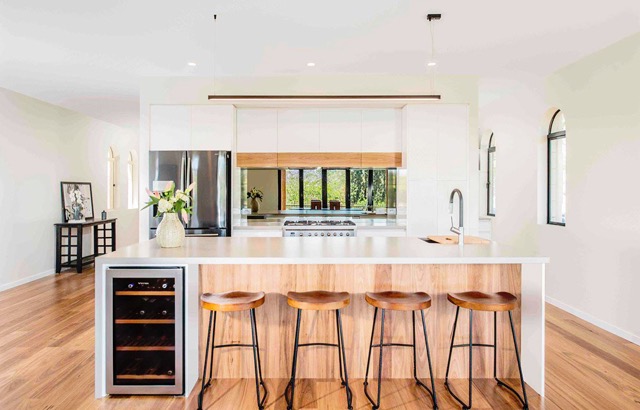A female renovator recently contacted Build in Common saying that her walls had started “sweating” a few weeks after she had her house freshly repainted. As part of what turned out to be a beautiful kitchen renovation, she had decided to repaint her entire house. The only problem was that her walls had now started leaching! Her concern was that this looked very different to the simple condensation water drops that form on walls after having a shower. Rather this seemed to be coming out of the wall itself and wasn’t just limited to the bathroom! Her hallway and bedrooms were equally affected. What should she do?
What is paint sweating?
Also known as surfactant leaching, this phenomena refers to “paint sweating” or what looks like water drips or water streak marks on walls. Sometimes these streaks or “tears” can simply be washed off and will eventually leach out completely, other times, these extractives can permanently stain the surface of your walls.
Paint sweating can be any number of the below:
- When the paint won’t stick or dry properly to a surface; or
- When it looks as though there are water runs down a wall or on a ceiling.
Why does it happen?
This sweating phenomena can happen when:
- the surface and the air temperature is too cold;
- humidity levels are high;
- there is high moisture in the air; or
- condensation forms on the surfaces of walls.
It can also happen if the walls are concrete or brick and haven’t been sealed properly.
What can you do to avoid it?
- Inspect the surfaces before applying paint. Are any surfaces damp or cooler than usual? What is the temperature in the area that is going to be painted?
- If the humidity levels are high, crank the aircon just enough to bring it back.
- If bricks or concrete walls haven’t been sealed properly, strip and reseal.
What can you do to fix the problem?
- Crank up the heating system, or if not available, hire places generally hire out industrial heaters.
- If the paint sweating is occurring on a regular basis in the bathroom areas, it is a good idea to check if the exhaust fan is powerful enough to eliminate condensation as much as possible.
- Ensure the area has adequate ventilation.
- If in doubt, get in touch with a professional painter and let them take a look at the problem.
Information provided by Build in Common in conjunction with Lana Bonnet and Dani Lawrence from L&D Picturesque Painting.



